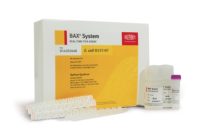On June 28, the U.S. Food and Drug Administration (FDA) released an update regarding the multistate outbreak linked to contaminated romaine lettuce.
FDA, along with the U.S. Centers for Disease Control and Prevention (CDC) and state partners, conducted an environmental assessment in the Yuma, AZ, growing region where the contaminated lettuce is believed to have originated. The assessment was aimed at finding the source of contamination. Soil, water, and cow manure samples were collected.
So far though, CDC’s analysis of samples gathered from canal water in the region has detected the presence of E. coli O157:H7 with the same genetic fingerprint as the multistate outbreak strain. Furthermore, additional strains of Shiga-toxin producing E. coli was found in both water and soil samples. At this time, the canal water samples are the only identical match to the outbreak strain.
“Identification of the outbreak strain in the environment should prove valuable in our analysis of potential routes of contamination, and we are continuing our investigation in an effort to learn more about how the outbreak strain could have entered the water and ways that this water could have come into contact with and contaminated romaine lettuce in the region.” says FDA’s update notice.
Environmental samples are still undergoing evaluation, according toFDA. Any new matches to the outbreak strain will be communicated publicly and with industry in the region.
As of June 27, CDC reports that 210 people in 36 states have become ill. These people reported there have been 96 hospitalizations and 5 deaths linked to the romaine lettuce outbreak.
Sign up for Food Safety Magazine’s bi-weekly emails!
Subscribe to our podcast: Food Safety Matters!




